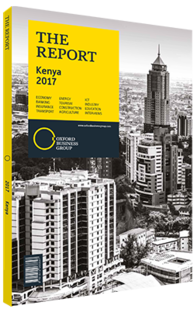Kenya maintains a goal of universal voice and broadband connectivity
Voice and broadband connectivity has been a top priority for ICT stakeholders in Kenya since the July 2013 launch of the country’s National Broadband Strategy (NBS), a long-term initiative to transform the country into a knowledge-based economy. The NBS, which was formulated by the Communications Authority of Kenya (CA), includes a target of universal broadband access at speeds of 5 Mbps. Since the launch of the strategy, broadband and mobile penetration have increased alongside mobile internet uptake and the launch of new 4G LTE and fibre optic networks, although the country has not yet achieved its goal of universal access.
At the end of 2015 mobile penetration rose from 78.3% in 2014 to reach 85.4%, according to the Kenya National Bureau of Statistics, while total internet penetration jumped from 38.3% to 54.2% over the same period, largely as a result of increased uptake of mobile broadband services. Although these gains are impressive, in January 2016 Christopher Kemei, the director for licensing compliance and standards at the CA, reported that for the country’s broadband strategy to be fully implemented, $3bn in new investment is required – creating a funding challenge in delivering last-mile access to thousands of residents.
Universal Service Fund
In an effort to mitigate these challenges, the Kenya Communications Act was amended in 2009 to provide for the establishment of a Universal Service Fund (USF), which is managed by the CA. The fund was created to support expansion of ICT services nationally, as well as to promote capacity building and ICT innovation.
The fund is financed by levies on licensed telecoms operators, government funding, grants and donations, charging a 0.5% tariff on the gross turnover from all commercial telecoms licensees. After telecoms operators negotiated with the government on how best to implement the new tariff, local media reported that the fund raised its first $1m in telecoms levies in August 2014 and, as of January 2016, the fund had collected KSh2.94bn ($28.7m) in revenue, according to CA estimates.
Recent Allocations
Also in January 2016, the CA announced it had allocated KSh1.5bn ($14.6m) from the USF for new infrastructure projects aimed at filling voice and broadband access gaps in the country. Catherine Ngahu, chairperson of the CA’s Universal Service Advisory Council, told media that the USF would also allocate KSh500m ($4.9m) to support internet connectivity in learning institutions across the country, from K-12 to universities.
The announcement followed the publication of the preliminary results of an annual ICT Access Gaps Study, which was conducted by Canadian firm Intelecon Research and Consultancy in 2015, with the goal of supporting communication services development in high-cost areas through the establishment of new projects and strategies.
Infrastructure & Schools
The 2010 edition of the country’s ICT Access Gaps study found that infrastructure issues, including low levels of electrification, posed one of the most significant challenges to ICT expansion in the country. Capacity upgrades and the installation of new power projects have since ameliorated this challenge, and according to the March 2016 ICT Access Gaps Study, 94.4% of the country is now covered by 2G services, leaving 5.6% – or roughly 2.66m people – without access.
The report noted that 5657 of 7149 surveyed locations across the country have 100% broadband coverage, while 418 have less than 50% coverage and 164 have no coverage. The April 2016 study also focused on limited ICT connectivity in learning institutions as one of the most significant hurdles to overcome in closing access gaps. On this point, Intelcon recommended that the government define the conditions of school internet readiness as soon as possible in order to better address the problem.
You have reached the limit of premium articles you can view for free.
Choose from the options below to purchase print or digital editions of our Reports. You can also purchase a website subscription giving you unlimited access to all of our Reports online for 12 months.
If you have already purchased this Report or have a website subscription, please login to continue.

